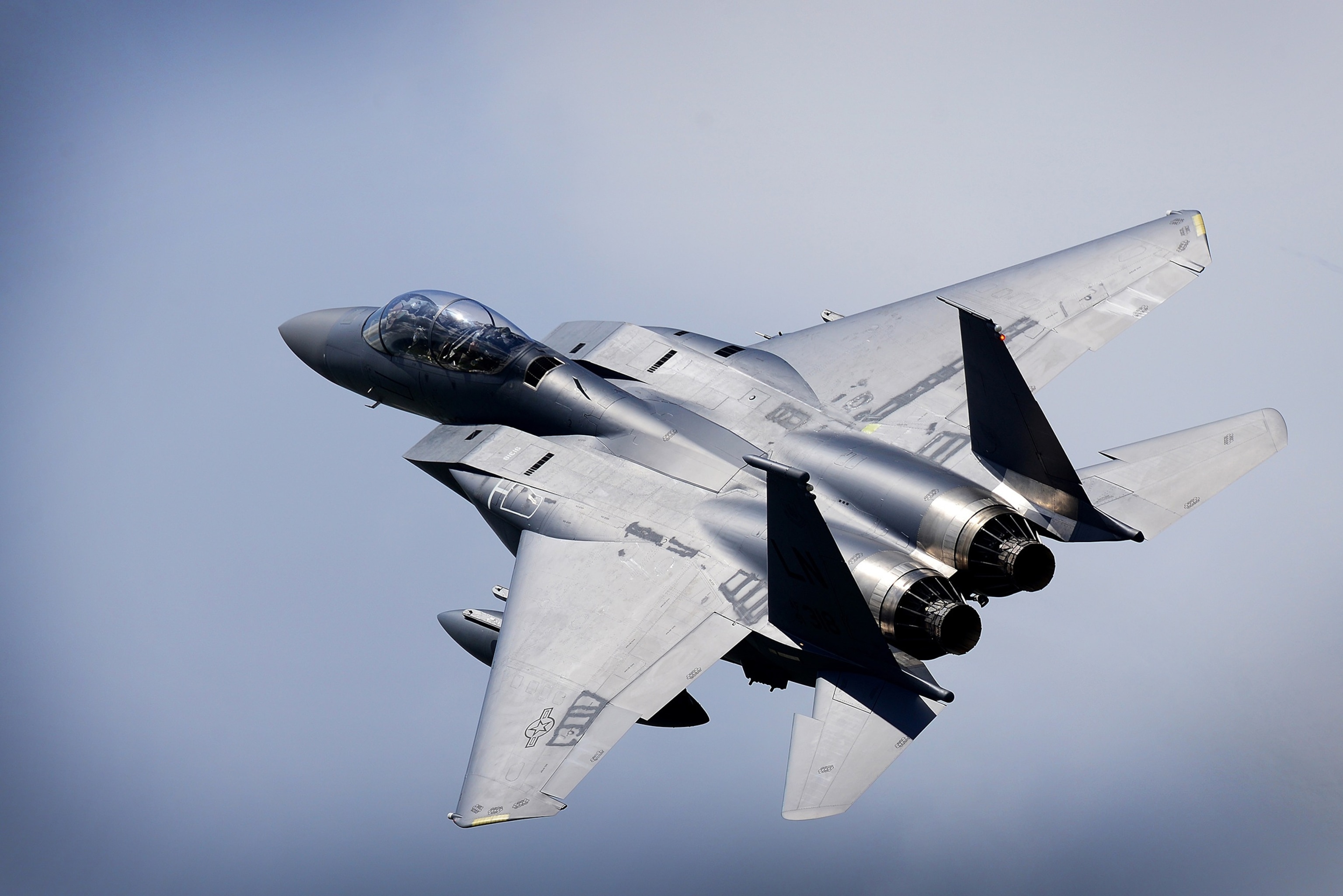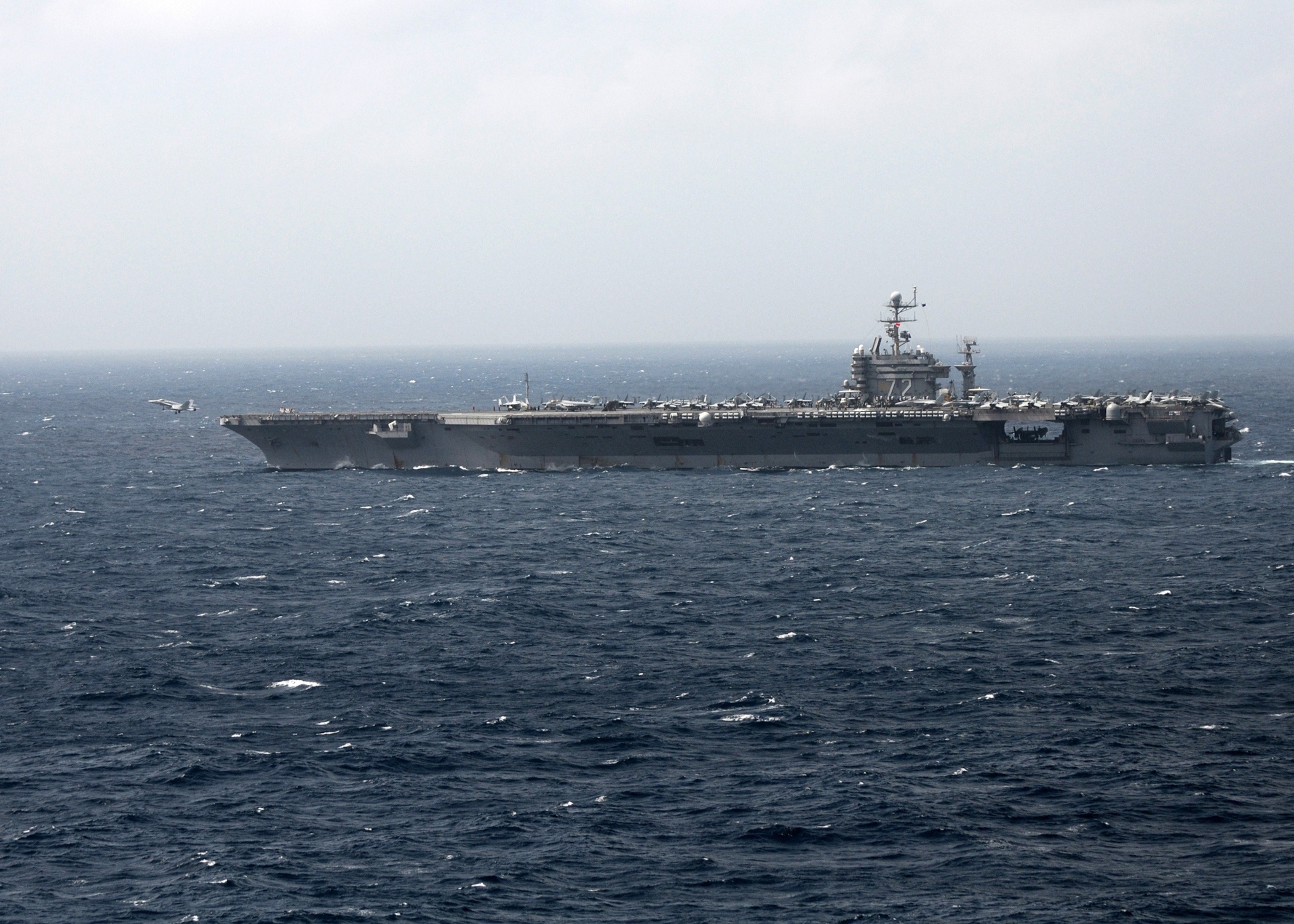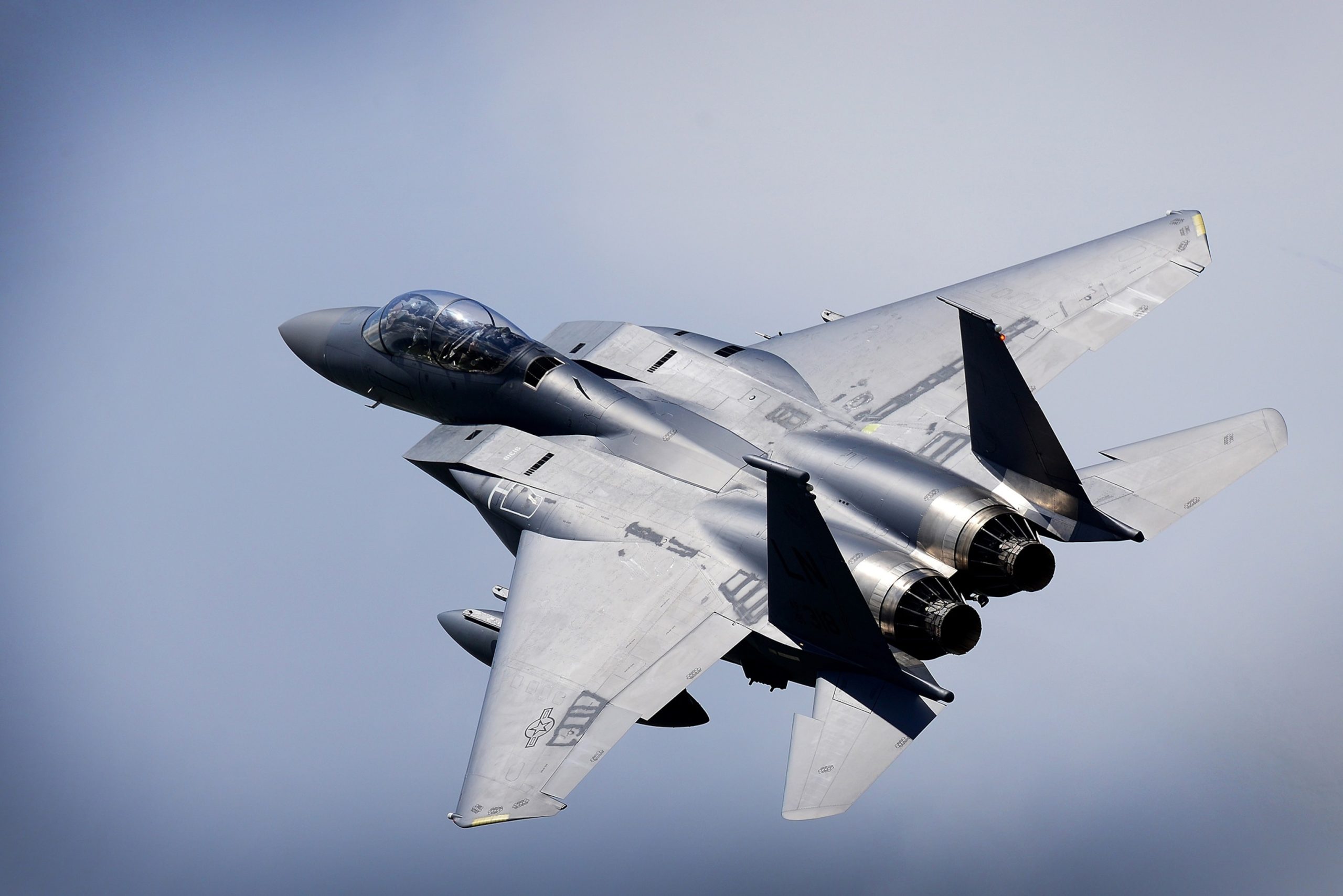The Pentagon will send an additional fighter squadron and more warships to the Middle East to help defend Israel should Iran react militarily to this week’s assassination of Hamas’ top political leader in Tehran that Iran has blamed on Israel.
The United States will also maintain an aircraft carrier presence in the Middle East as Defense Secretary Lloyd Austin ordered the USS Abraham Lincoln to replace the USS Theodore Roosevelt that was on a short-term deployment to the Middle East.
The deployments follow President Joe Biden’s commitment to Israeli Prime Minister Benjamin Netanyahu on Thursday about “new defensive US military deployments” to the region.

An F-15E Strike Eagle assigned to the 492nd Fighter Squadron flies over Royal Air Force Lakenheath, England, May 10, 2018
U.S. Air Force
Austin “ordered adjustments to U.S. military posture designed to improve U.S. force protection, to increase support for the defense of Israel, and to ensure the United States is prepared to respond to various contingencies,” the Pentagon said in a statement issued Friday.
Austin also ordered the deployment of an additional fighter squadron to the Middle East “reinforcing our defensive air support capability,” the statement said.
“Additionally, Secretary Austin has ordered additional ballistic missile defense-capable cruisers and destroyers to the U.S. European Command and U.S. Central Command regions,” according to the statement.
“The Department is also taking steps to increase our readiness to deploy additional land-based ballistic missile defense,” it continued.

An F/A-18 Hornet launches from the aircraft carrier USS Abraham Lincoln (CVN 72), on Oct. 14, 2010.
U.S. Navy
This week’s assassinations of Hamas’ senior political leader Ismail Haniyeh in Tehran and Fouad Shukur, a top Hezbollah commander, in Beirut, have raised concerns that an Iranian retaliation could spark a broad regional beyond Israel’s war with Hamas.
The new deployments announced Friday will serve as a deterrent to prevent a larger conflict and are also intended to assist Israel should Iran reprise last April’s missile barrage of hundreds of drones and ballistic missiles targeted at Israel in retaliation for an Israeli airstrike in Damascus, Syria, that killed a top Iranian military leader.
The overwhelming majority of those drones and missiles were shot down by a combination of Israeli air defense systems and U.S. fighter jets that had been deployed to the region ahead of a possible Iranian retaliation.
The deployment of the USS Abraham Lincoln Carrier Strike Group will provide a consistent carrier presence in the region that might not have been possible if the USS Theodore Roosevelt Carrier Strike Group ended its short-term deployment to the region on time.
Currently deployed to the western Pacific, it’s unclear when the Lincoln would arrive in the Middle East to replace the Roosevelt, which is currently in the Gulf of Oman.
There are six U.S. Navy destroyers currently deployed to the Middle East region, and it’s possible that some of them could be moved through the Suez Canal into the Eastern Mediterranean as part of the moves ordered by Austin on Friday.
There are currently two other destroyers in the eastern Mediterranean that are part of a regular mission to provide ballistic missile defense capabilities in that region.
Also stationed in the eastern Mediterranean are the USS Wasp amphibious assault ship and two other amphibious ships that are carrying the 2,200 Marines from the 24th Marine Expeditionary Unit (MEU)
U.S. officials have said that the ships and the Marines aboard could be used to carry out an evacuation of U.S. personnel in the region should that become necessary.
The United States has recently announced an increase in its military presence in the Middle East in anticipation of a potential Iranian response. This move comes amid escalating tensions between the two countries, following the assassination of top Iranian general Qasem Soleimani by a US drone strike in January.
The decision to bolster US forces in the region was made in response to intelligence reports suggesting that Iran may be planning retaliatory attacks against American interests. The Pentagon has deployed additional troops, including B-52 bombers and Patriot missile defense systems, to countries such as Iraq, Kuwait, and Saudi Arabia.
The increased military presence is aimed at deterring any potential Iranian aggression and ensuring the safety of US personnel and assets in the region. The US has also urged its allies in the Middle East to remain vigilant and take necessary precautions to protect themselves against possible Iranian attacks.
The move has raised concerns about the possibility of further escalation and conflict between the US and Iran. Both countries have been engaged in a war of words and tit-for-tat actions since the killing of Soleimani, with Iran vowing to avenge his death and the US warning of severe consequences for any Iranian aggression.
The situation remains tense and unpredictable, with both sides seemingly unwilling to back down. The US has reiterated its commitment to defending its interests in the region, while Iran has vowed to resist what it sees as American aggression.
The increased US military presence in the Middle East is a clear signal of Washington’s determination to protect its interests and allies in the region. However, it also raises concerns about the potential for miscalculation and unintended consequences that could lead to a wider conflict.
As tensions continue to simmer, it is crucial for both sides to exercise restraint and seek diplomatic solutions to de-escalate the situation. The international community has called for dialogue and peaceful resolution of differences between the US and Iran, in order to prevent further bloodshed and instability in the already volatile Middle East.



